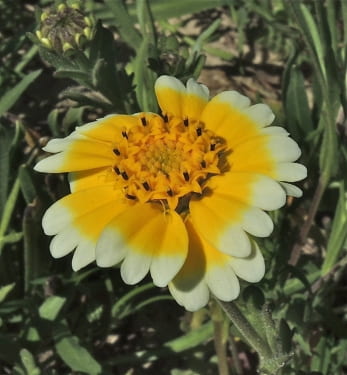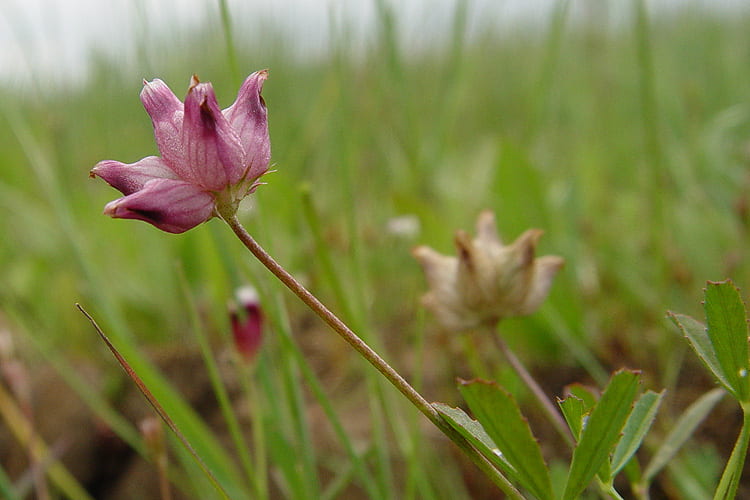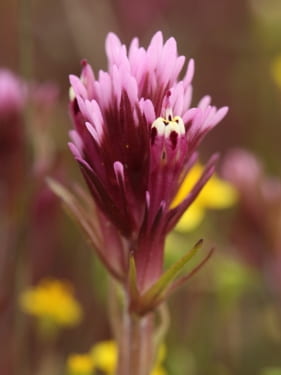Date: April 4, 2019
Location: Edgewood Park; 10 Old Stage Coach Road, Redwood City, 94062
Site Description: First part of the hike was dominated by Quercus spp. There were also a lot of ferns living in the understory of the oaks and other trees that were in the first section of our hike. Then, we came out of the oak forest and into a grassy plains area where there were many small flowers. We saw many members of the Fabaceae and Rubiaceae families, as well as some from the Orobancaceae family which I don’t think we had been introduced to yet.
Species we saw:
(Source: https://calscape.org/Castilleja-densiflora-(Denseflower-Indian-Paintbrush)?srchcr=sc5a549f598c6c1)
- Denseflower Owl’s Clover (Castilleja densiflora): This member of the Orobancaceae is short and stout, but has a beautiful flower that is head-like, which is often characteristic of orobancs, and is whitish-to-purple in color. In contrast with its purple flower, it has bright-to-dull green bracts that sit underneath the flowers. It is a annual root parasite that gets its nutrients from latching onto the roots of other plants. Normally it is native to Baja, CA, but I could not find any information on whether or not it is native to the bay area.
 (Source: https://calscape.org/Layia-platyglossa-(Common-Tidy-Tips))
(Source: https://calscape.org/Layia-platyglossa-(Common-Tidy-Tips))
- Tidy tips (Layia chrysanthemoides): This gorgeous flower is an annual native herb with a head inflorescence, as it is also a member of the asteraceae family. It looks very similar to daisies, with many ray and disk flowers making up the head. Its outer petals are bright yellow with white tips, creating a beautiful white ring the circles the entire head inflorescence. Its leaves are opposite and oblong in shape and the stem and leaves are somewhat hairy. This flower is apparently very popular for gardening and
 (Source: https://www.calflora.org/cgi-bin/species_query.cgi?where-taxon=Trifolium+depauperatum+var.+depauperatum)
(Source: https://www.calflora.org/cgi-bin/species_query.cgi?where-taxon=Trifolium+depauperatum+var.+depauperatum)
- Dward bladder clover (Trifolium depauperatum): This annual herb is native to California gets its name from its odd flower that looks like its swelling, much like my bladder on all of our field trips. It is a member of the Trifolium genus of the Fabaceae family. The Trifolium genus is characterized with distinctly shaped leaves that look like clovers and are very soft to touch. As is characteristic of most fabaceae plants, their flowers have unique morphology with wings, a keel, and a banner (though it is not as well defined in this flower). Its leaves have dentate margins and pinnate venation, they almost look a little grass-like to me.
